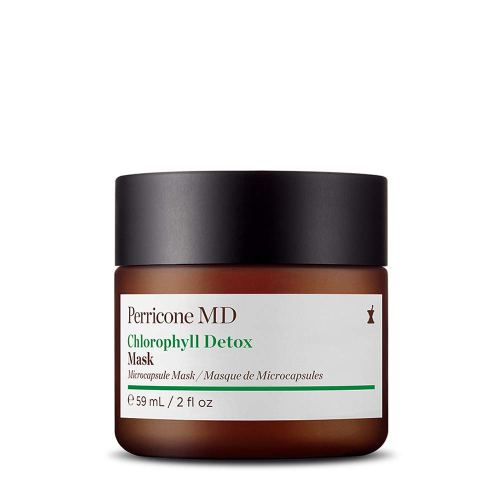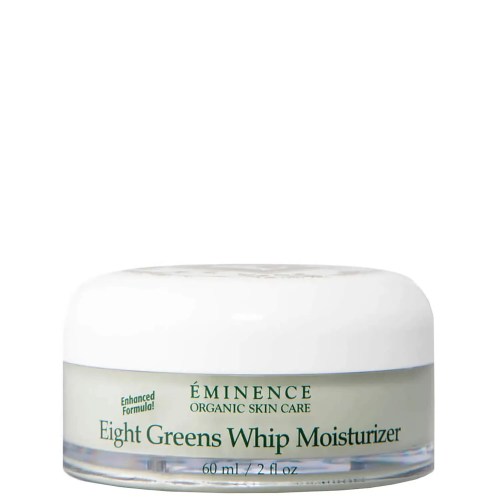Our editors independently select these products. Making a purchase through our links may earn Well+Good a commission
Chlorophyll Is the Anti-Aging, Anti-Inflammatory Ingredient Your Skin-Care Routine Is Missing
Chlorophyll for skin offers anti-aging and anti-inflammatory properties. Here's what happened when I added it to my routine.

Chlorophyll—a word you likely recognize from high school biology class—has become a wellness-world darling. On social media, people are drinking water infused with the stuff to help with their hangovers, and nutritionists have hailed the benefits of eating chlorophyll-rich foods for gut health. One more place this powerhouse green ingredient deserves its time to shine? In your skin-care routine.
Experts in This Article
board-certified dermatologist in New York City
board-certified dermatologist and clinical instructor of dermatology at Weill Medical College of Cornell University
board-certified dermatologist, fellow of the American Academy of Dermatology, founder of Lancer Glow.
The benefits of chlorophyll for skin
Chlorophyll is a green pigment found in plants, algae, and cyanobacteria. It’s essential in photosynthesis, AKA the process through which plants absorb energy from light. It’s packed with antioxidants, plus vitamins A, C, E, and K, which means its benefits extend beyond plant health and into skin health.
Ingredient breakdown:
- Vitamin A: Stimulates cellular turnover
- Vitamin C: Brightens skin
- Vitamin K: Fights discoloration
- Vitamin E: Moisturizes
“Chlorophyll has antioxidant properties and therefore can help to reduce damage from free radicals,” says Hadley King, MD, a board-certified dermatologist specializing in medical and cosmetic dermatology. “This can make it a part of an anti-aging regimen and could improve signs of skin aging.”
Additionally, Harold Lancer, MD, board-certified dermatologist and founder of Lancer Skincare, points to research that has shown the ingredient can treat various skin concerns, including acne and sun damage, as well as inflammatory skin conditions like rosacea and psoriasis. One study from 2015 found that participants with moderate acne and large pores who used topical chlorophyllin (a derivative of chlorophyll) for three weeks saw an improvement in their skin’s overall appearance, and another from 2008 found that topical products with chlorophyllin were more effective at healing wounds than other over-the-counter options. “So really, the benefits are that it contains anti-inflammatory and anti-bacterial properties,” says Dr. Lancer.
However, Carmen Castilla, MD, a board-certified dermatologist and clinical instructor at Mount Sinai, says that more research needs to be done in order to prove its benefits. There have been small and limited studies conducted so far on the efficacy of chlorophyll in skincare compared to those on ingredients like niacinamide and hyaluronic acid.
How to use chlorophyll for skin
Generally speaking, you’ll find chlorophyll popping up in moisturizers, masks, eye creams, mists, and serums. According to Dr. Lancer, the ingredient is safe for most skin types, but those with sensitive skin should proceed with caution.
“Individuals who don’t wear sunscreen should avoid chlorophyll as it causes photosensitivity in the skin much like a retinol does,” Lancer advises. “Those who are also very sensitive should be aware of this ingredient as high doses can cause itching and burning sensations in the skin.”
What happened when I added chlorophyll for skin to my routine

Cocokind, Chlorophyll Discoloration Serum — $20.00
After learning about the benefits of chlorophyll, especially for the skin, I was eager to try out the newest chlorophyll product to hit the market: Cocokind Chlorophyll Discoloration Serum ($20).
The brand claims that the serum helps reduce the appearance of discoloration, redness, post-blemish marks, and signs of UV damage. Additionally, since it’s formulated with vitamin B5 (a moisturizer), alpha arbutin, and licorice root (two skin-brightening ingredients), this serum takes chlorophyll’s skin-loving properties to the next level.
In addition to having a smooth feel, the serum had a refreshing botanical fragrance and although it looks green initially it doesn’t leave any traces behind—that is, aside from a natural-looking glow. Per the brand’s directions, I applied it in the morning and at night for a week, and I definitely noticed a difference in the texture of my skin. What’s more, I found the serum diminished the appearance of my skin’s usual redness—it was still there, but definitely wasn’t as prominent as it normally is. I also used the serum on a dark spot that recently popped up after a pimple left me with post-inflammatory hyperpigmentation, and after a week noticed it had lightened significantly.
Shop chlorophyll for skin

Perricone MD, Chlorophyll Detox Mask — $69.00
This mask harnesses chlorophyll’s anti-bacterial properties, which helps detoxify pores. It combines the plant ingredient with exfoliating papaya enzymes and skin-strengthening copper peptides, delivering a one-two punch of anti-aging and anti-acne benefits.

Naturopathica, Chlorophyll and Salicylic Acid Spot Treatment — $34.00
Thanks to the combination of chlorophyll and salicylic acid, pimples don’t stand a chance against this spot treatment. Both dive deep into the skin to clear your pores from the inside out, while chlorophyll works solo to calm any acne-related inflammation and defend against post-inflammatory hyperpigmentation (aka the dark spots that arise after you pop and pick at your zits).

Eminence Organic Skin Care, Eight Greens Whip Moisturizer — $69.00
This plant-powered moisturizer is essentially a green juice for your face. It combines chlorophyll with a slew of other natural antioxidants—including yucca extract, stone crop, red clover, and paprika–plus a booster complex that smooths wrinkles and enhances the overall appearance of the skin. All in all, it will leave your complexion quenched and calm.
Sign up for the Well+Good SHOP Newsletter
Get exclusive deals on wellness, beauty, fitness, and food products that have been hand-picked by our editors.
Got it, you've been added to our email list.










